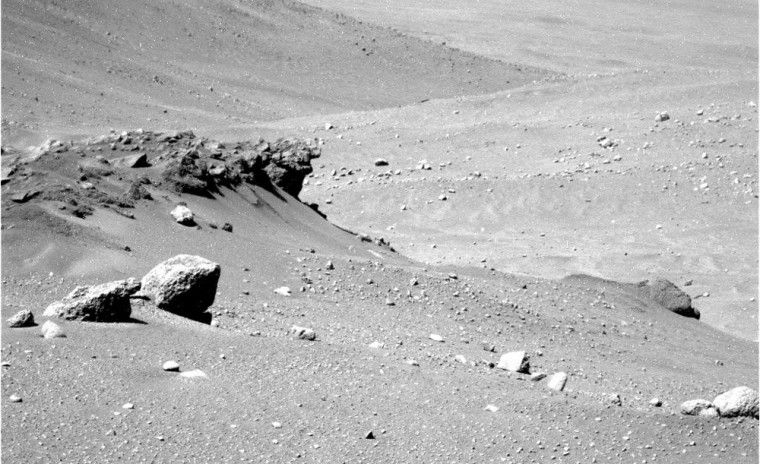NASA has approved up to 18 more months of operations by the twin rovers that have discovered evidence of a watery past on Mars.
The third "overtime" extension foresees the rovers operating until September 2006, NASA said in a statement Tuesday.
Both of the solar-powered, six-wheel robot geologists landed on the Red Planet in January 2004 and have completed their three-month prime missions as well as 11 months of mission extensions.
The space agency did not announce the cost of the mission extension. The original mission cost $820 million, and there have been two six-month, $15 million extensions.
Both rovers still healthy
Ghassem Asrar, deputy associate administrator for NASA's Science Mission Directorate, said the rovers have proven their value with major discoveries and were still healthy.
"We now have to make long-term plans for the vehicles because they may be around for quite a while," Jim Erickson, rover project manager at NASA's Jet Propulsion Laboratory in Pasadena, said in the statement.
Erickson cautioned, however, that "either mission could end tomorrow with a random part failure."
"With the rovers already performing well beyond their original design lifetimes, having a part wear out and disable a rover is a distinct possibility at any time," Erickson said. "But right now, both rovers are in amazingly good shape. We're going to work them hard to get as much benefit from them as we can, for as long as they are capable of producing worthwhile science results."
Opportunity heads for etched terrain
Opportunity is within a few football fields' length of a region notable for its etched terrain, where scientists hope to find rocks exposed by gentle wind erosion rather than by disruptive cratering impacts. The rocks could reflect a geological era on Mars different from any examined so far.
"This is a journey into the unknown, to something completely new," said Cornell University's Steve Squyres, principal investigator for the rovers' science instruments.
To reach the etched terrain, rover planners have been pushing the rover over terrain as smooth as "an East Coast beach," said Jeff Favretto, a JPL mission manager for Opportunity.
Opportunity has overtaken Spirit in total distance driven. It has rolled more than 3 miles (4.9 kilometers), eight times the original goal. On March 20, Opportunity also set a new Martian record of 722 feet (220 meters) in a single day's drive.
Spirit targets the top of Husband Hill
Meanwhile, the Spirit rover has traveled 2.6 miles (4.2 kilometers). Spirit is in much rougher terrain than Opportunity, climbing a rocky slope toward the top of a slope called Husband Hill. Squyres said mission managers planned to send Spirit to the hill's summit, then down into the "Inner Basin" on the other side. Inner Basin appear to offer terracing that hints of layered rock, NASA said.
Spirit as well as Opportunity have gotten a power boost in recent months, apparently due to Martian winds that have swept accumulated dust off their solar panels.
Both rovers show some signs of wear and exposure: The teeth on Spirit's rock abrasion tool may have been worn away, although researchers don't yet know the full extent of the wear. Also, troubleshooting continues for determining whether Opportunity's miniature thermal emission spectrometer is still usable despite tests indicating a problem last month.
This report includes information from The Associated Press and NASA.
